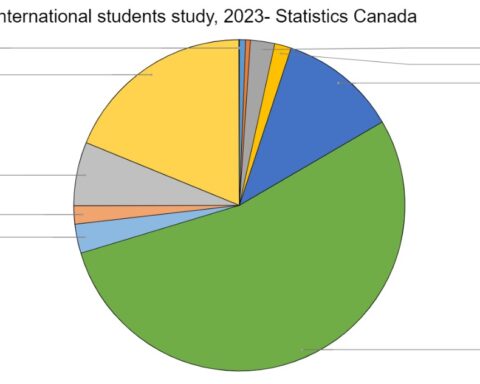Canada needs a greater competitive edge in order to remain a top destination of choice for immigrants from around the world. This was the primary message from the two-day Canadian Immigration Summit, wrapped up in Ottawa this week.
While the summit, which was organized by the Conference Board of Canada (CBOC) touched on a range of issues including language, employment, education, health, social integration and cultural adaptability, the economic benefit of immigration was clearly the focus. Not surprising, as economic migrants make up the bulk of total immigrants to most host countries in the West.
There is an urgent need to keep Canada relevant at a time when many other countries in East Asia and Africa, for instance, are upping their game in providing attractive employment or investment.
It was a lot of ground to cover in such a short time for what would help in developing the research agenda of the COBC’s newly created National Immigration Centre and associated National Immigration Action Plan.
In order for this plan to roll out effectively, a vast number of complex social issues must be addressed; the summit was set up to get the dialogue started. Here is a look at some of the hot-button issues surrounding the future of immigration that emerged:
Express Entry
Discussion around the new application management system for permanent residents, Express Entry, covered its benefits and drawbacks.
Despite being very new (only launched in January this year), there was caution around the system – which creates a pool of qualified applicants who can apply for permanent residency based on points – saying a human side needed to balance the economic side.
Interesting to note, Canada was seen primarily as a small business economy, and it was examined how Express Entry would impact newcomers in that context.
International Students
Canada has an ambitious target of attracting 450,000 international students to Canada by 2022. But, the country is starting to face stiff competition from places like China, from where a majority of Canada’s international students actually come from.
China is now ramping up its own education system to attract international students from the surrounding region.
Pathways to permanent residency, an attraction for many students who want to remain in Canada, is also heavily dependant on what Canada can offer these students in terms of employment prospects.
Global Competitiveness
There is an urgent need to keep Canada relevant at a time when many other countries in East Asia and Africa, for instance, are upping their game in providing attractive employment or investment. The flow of labour is shifting towards these regions.
Add to this, the notion of the “transnational entrepreneurs”, skilled professionals who do not want to remain in one country for very long, but follow the trail of economic prosperity in different countries.
A dearth of pre-arrival services was the most common gap perceived in the settlement services sector, in addition to weak funding and the need for such services to modernize to cater to the changing profile of immigrants over the years.
This is also an important challenge for the retention of newcomers to Canada. Staying in one place permanently is fast becoming a way of the past among many newcomers.
Immigrant Retention
Closely connected to settlement and an important part of the immigration mechanism, is the idea of retention.
A dearth of pre-arrival services was the most common gap perceived in the settlement services sector, in addition to weak funding and the need for such services to modernize to cater to the changing profile of immigrants over the years.
Preparing immigrants before they arrive in Canada of what to expect and where to find networks is an important part of their first impressions, and ultimate retention.
Aging Population
The observation that kept coming up was the challenge of an aging population in Canada and the need for immigration to fill this demographic gap.
But it was also made clear by more than one speaker that immigration is not a panacea to this and issues of labour market shortages in Canada.
Systems and processes need to be smoother and simpler, both for those who wish to migrate permanently, as well as those who want to work temporarily or transnationally.
Bringing more immigrants to Canada also needs extensive investment in resources and the creation of more economic opportunities.
Systems and processes need to be smoother and simpler, both for those who wish to migrate permanently, as well as those who want to work temporarily or transnationally.
Once again, the competitiveness of the global economy is one that needs to drive Canadian immigration policy.
But also, other incentives such as easy access to business loans to newcomers who seek to find alternative professions are ways to create an attractive and more stable environment for both the economy and newcomers.





